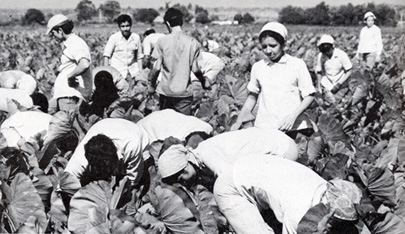 |
|
| |
| The Cuban Education System |
| Cuba has one of the highest education rates. There is two beliefs to why the education is so high. Those in favor of Castro believe it was the emphasis on education since the revolution. Anti-Castro claims that Cuba has always been high in education. |
During the early Spanish Colonial days there was little to no education for peasants and slaves who lived in rural areas. Those who lived in urban areas had access to education. During the United States occupation Cuba’s plain was to lay education for all children on the island.
 |
After the revolution the primary goal was to improve the education system. 1961 was declared the Year of Education. A major and effective campaign for adult education was launched. Nearly 300,000 children and adults were sent to the countryside to teach under the slogan, “If you know, teach; if you don’t know, learn.” By 1979 Cuba’s literacy rate was higher than 90%. Almost everyone in Cuba has gone to school. |
|
| |
| |
| Structure of the Education System |
| Classes are mostly in lecture form, with little to no teacher-student interaction. Students are encouraged to memorize, and discouraged of asking any question and thinking independently. Schools education is incorporated into community life. |
| The school year runs from September to June, a total of forty weeks. All schools are under the control of the Ministry of Education. Students are to wear uniforms. Students pass grade by grade. They take national examination; their contributions and attitudes toward socialism are also taken into consideration. |
| Students are required to attend school for the six years. This is the primary level, which includes grades one through six. School starts at the age of six. They must attend school for six and a half hours. The main subjects studied are basic literacy skills, composition in Spanish, and basic arithmetic. All students inlcluding the littlest ones are required to help keep their school clean and work on its gardens. |
| Students up to the age of sixteen (grades 7 through 9. 10, 11) are required to continue education at the secondary level or join the Youth Movement, which combines study with vocational training and service. Student’s school weeks are split in half, a day in the classroom, and a day working in the farms. Attend up to 26 hours of school per week. They study up to nine to ten subjects, with no electives. |
 |
|
| If students decide to attend higher education than secondary education, they attend three or four more years of education. This is only pre-college. So, by the time they attend college they will have fifteen years of education under their belt, and will be allowed to attend college for free if they choose. There are four universities in Cuba: la Habana, Las Villas, Camaguey, and Oriente.
|


